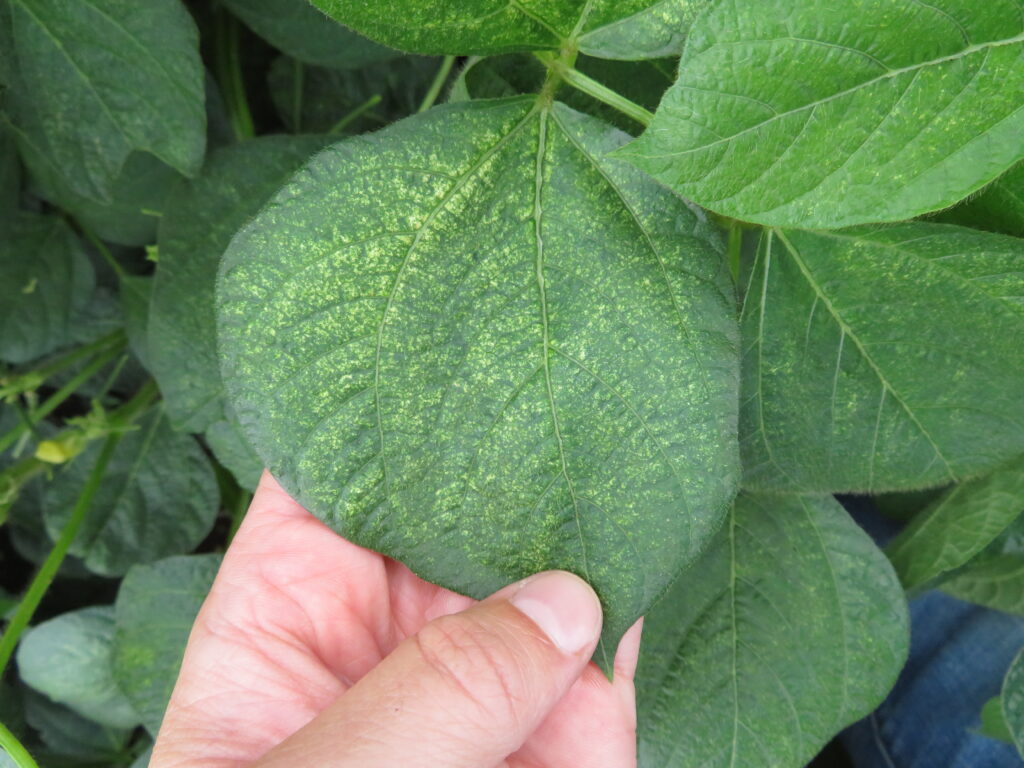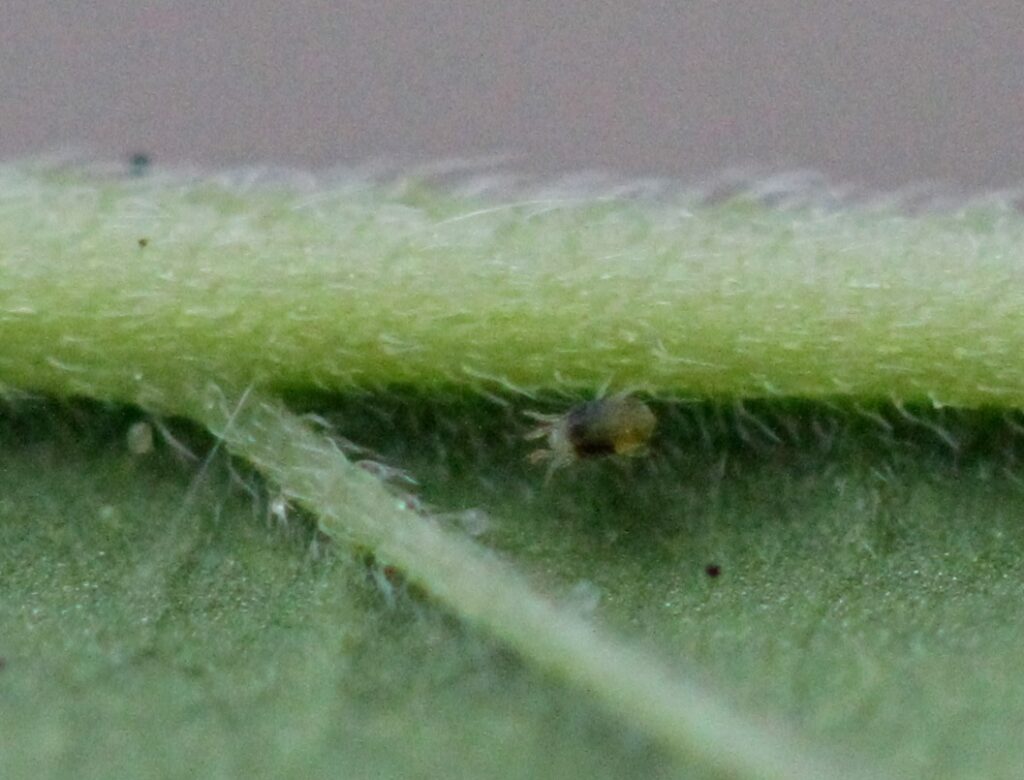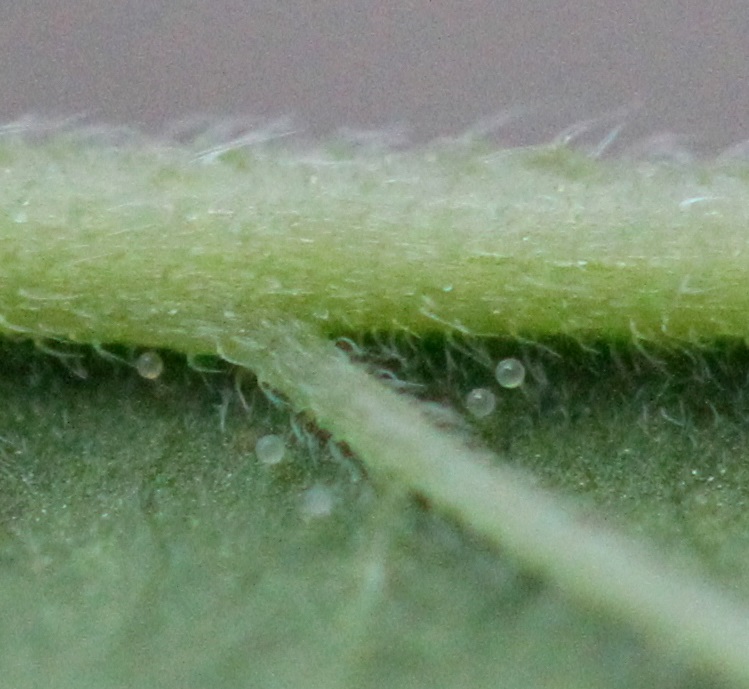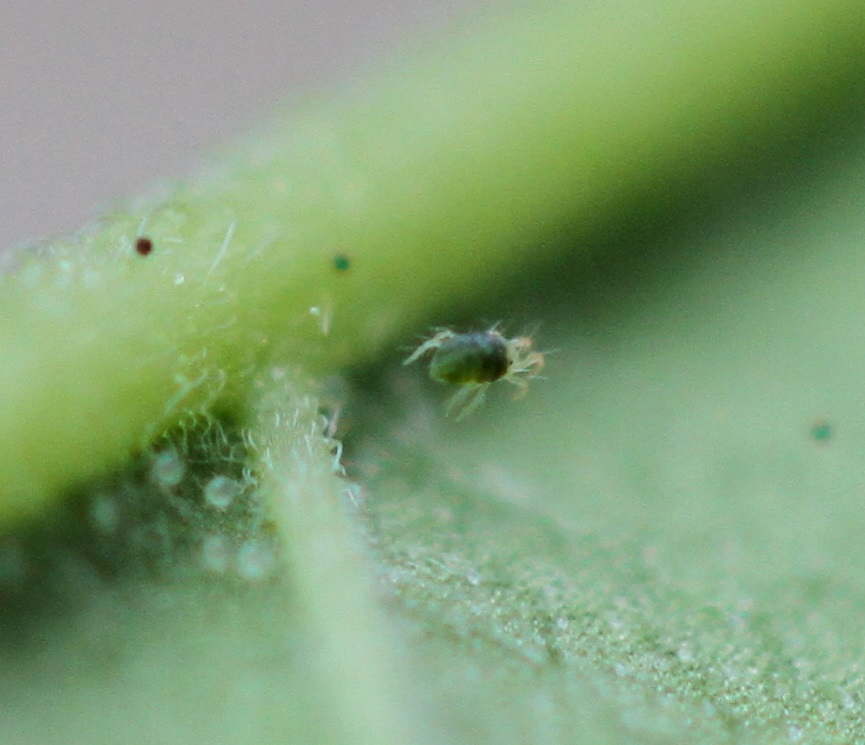Two-Spotted Spider Mite (Tetranychus urticae)
Description
The adult mite is barely visible to the naked eye, roughly 0.5–1.0 mm in length, rounded, eight-legged and yellowish-brown with two dark spots on the sides of the abdomen. Nymphs look similar to the adults but are smaller. The larvae have six legs instead of eight. Overwintering females are orange/red. Eggs can be found on the underside of leaves and are very tiny, clear white spheres. Webbing may be visible on the underside of leaves.
Life Cycle
There can be up to seven generations per year, with generation development overlapping. Spider mites generally overwinter as adult females in sheltered areas, such as plant debris and field margins. Harvested wheat fields underseeded to red clover are another important overwintering site. Red clover provides food for mites until freeze-up, allowing the mites to survive in the field. In late April, as the weather turns warm, mites become active in search of food and egg-laying sites. Spider mites disperse by crawling, so infestations tend to spread slowly from field edges. Non-mated female mites will mass at the top of the plants and spin webs that serve as a “balloon,” allowing strong winds to pick them up and carry them of to another site. Spider mite females can reproduce without mating. A single unmated female can be the start of a new colony. Under hot, dry, windy conditions, infestations can spread very quickly. Frequent rain and cool weather typically reduces mite populations in soybeans.
Damage
Spider mites can cause major economic injury in soybeans and often go unnoticed until it is too late. They are also a pest of dry beans. Mites feed on individual plant cell contents on the underside of leaves through stylet-like mouthparts. Each feeding site causes a stipple. Severe stippling causes yellowing, curling and bronzing of the leaves. Eventually, the leaf will dry up and fall of. Upon close examination, fine webbing on lower surfaces of the foliage can be seen. Damage is more severe in hot, dry weather and usually occurs in mid-July (after winter wheat harvest). Spider mites usually start at the edges of the field, but windy days can carry them in from other sites, with pockets starting up deeper into the field. From the road, these pockets may have been confused for drought stress.

Conditions that Increase Risk
Infestations are most severe during hot dry weather conditions. High-risk factors include fields that are neighbouring winter wheat stubble, hay fields and ditch banks and fencerows that harbour overwintering mites. No-till fields of soybeans following winter wheat underseeded to red clover are also at risk. Infestations tend to occur shortly after wheat harvest and when municipalities mow roadsides.
Scouting and Threshold
Scout fields weekly, starting the first week of July. Infestations usually move in from the edge of fields as hot spots. Look for tiny white stipples on the upper surface of leaves in the mid-canopy. Pull these leaves from the plant and shake them onto a white piece of paper to see the actual mites moving around. You will need a 10X hand lens to actually see the mites. Also inspect leaves for eggs. If there are a large number of eggs present, a second scouting 4–7 days after a foliar application may be required, as mites hatch from these eggs to repopulate the plants. Rain can knock mites off the plant. If rain is in the forecast, delay a management decision until after the rain and then reassess mite populations. Four or more mites per leaflet, or one severely damaged leaf per plant prior to pod fill, indicates that control is necessary.
Management Strategies
- If mite numbers exceed the threshold, an insecticide may be necessary.
- Use border sprays to keep early infestations under control. This will help prevent the spread of mites to other parts of the field and may reduce the need for further treatment.
- If rain is in the forecast, delay spraying. Prolonged wetness will usually reduce the number of mites to insignificant levels.
- Use of drought-tolerant varieties will minimize the effect of spider mites.
- Natural enemies help keep mites at low levels when conditions are unfavourable for the mites. Natural enemies of mites include ladybird beetles, thrips and predaceous mites. Cool temperatures and high humidity can promote the development of a pathogen that can provide natural control.
- Ensure that the selected insecticide has activity on spider mite (e.g. dimethoate), and does not have activity on beneficial predators of spier mite (e.g. lambda-cyhalothrin)




